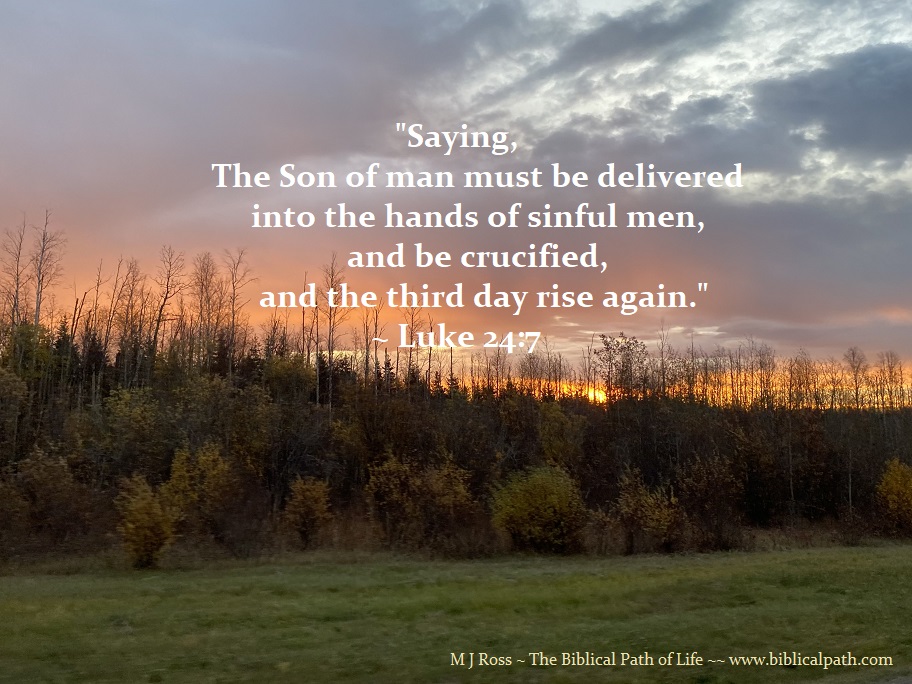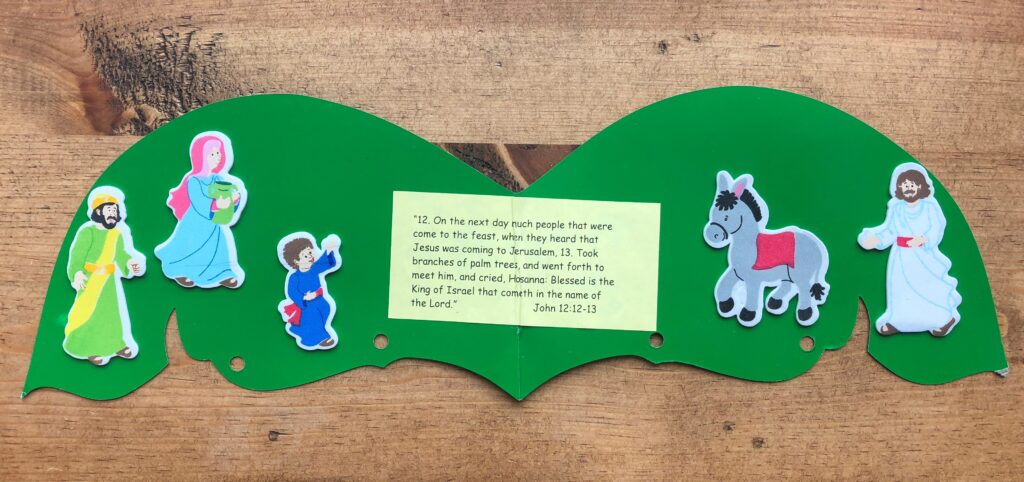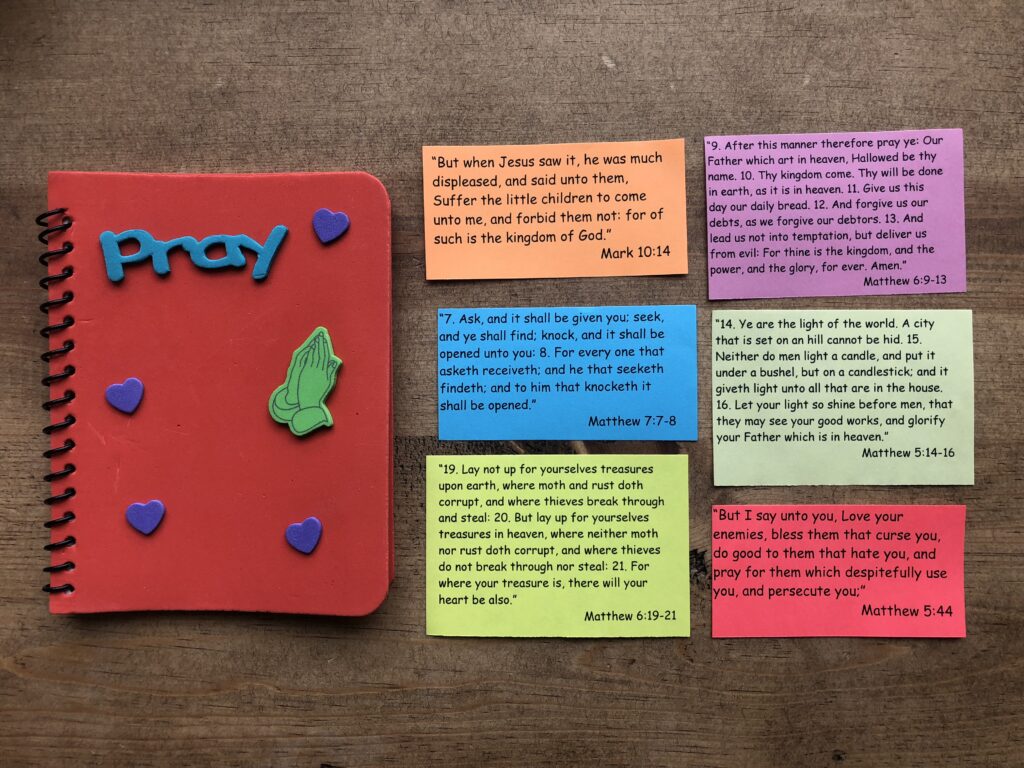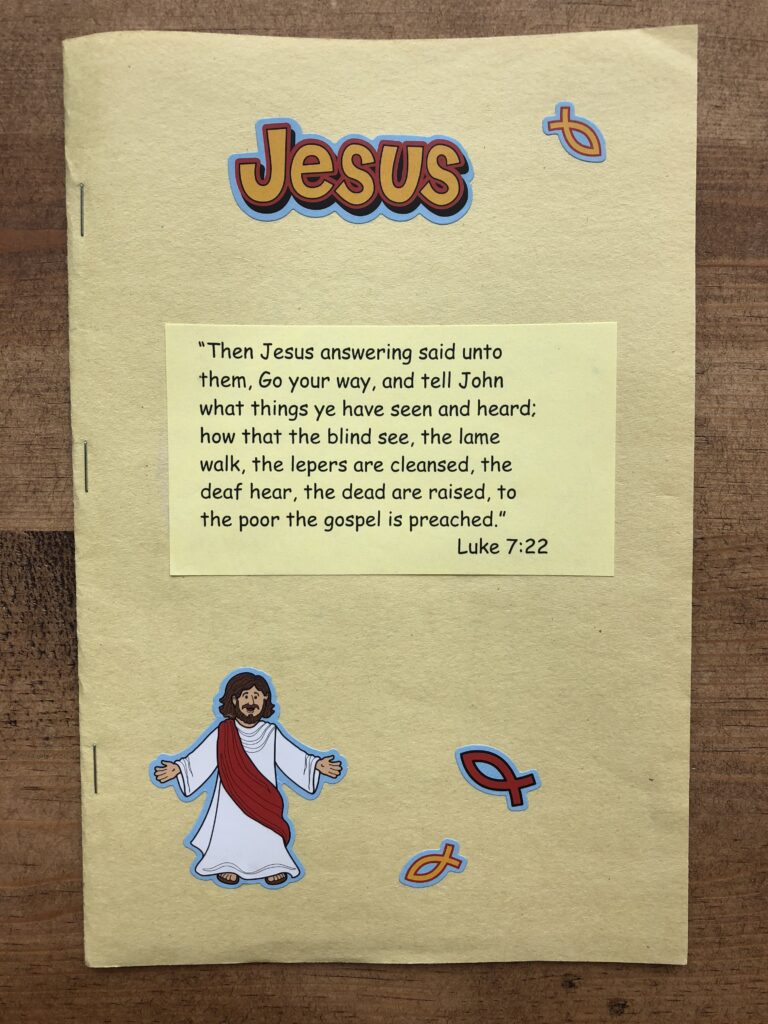
Key Verse
Saying, The Son of man must be delivered into the hands of sinful men, and be crucified, and the third day rise again.
—Luke 24:7
Key Verse Thought: Read today’s Key Verse. We need to understand that Jesus was often called the “Son of man.” In our last lesson, we read that Jesus had been delivered into the hands of sinful men. In this lesson, we will see that those sinful men crucified Jesus, and more importantly that Jesus rose again on the third day. It is important to remember what Jesus had told the people (including the religious leaders). “For as Jonas was three days and three nights in the whale’s belly; so shall the Son of man be three days and three nights in the heart of the earth” (Matthew 12:40). Consider the events of Jonah who spent three days and nights in the belly of the whale. We will read that Jesus’ body was in the tomb for three days and three nights.
Emphasis: We are to understand that Jesus came to die for the sins of the world, and that He lives again. Any who believe this can have the gift of eternal life that Jesus’ life purchased.
Lesson Summary: As we ended our last lesson, Jesus had been delivered by Pilate to be crucified.
We will again, in this lesson, read directly from God’s Word. It could never be retold any better than the witnesses that were there who recorded it in God’s Word. If you are in a class setting, try to read as much of it to your students as they are able to understand. Explain the rest to them.
In this lesson, we begin with the crucifixion of Jesus. Even while Jesus was on the cross, we will read that although there were many who mocked Jesus, at least two believed in Him. After Jesus died on the cross, two men (Joseph and Nicodemus) took Jesus’ body and buried it before the Passover. After Jesus had been dead for three days and three nights, some women went to the tomb to prepare Jesus’ body with spices and ointments. Before they arrived, there had been an earthquake: the stone had been rolled away, revealing an empty tomb. As the women approached, they saw that empty tomb, and angels told them that Jesus was alive. The angels told the women to go tell the disciples. They went and told the eleven. Jesus revealed himself to Mary Magdalene. Mary went and told the disciples that she had seen Jesus.
One of the watchmen told the chief priests that the tomb was empty, and the chief priests paid them a great sum of money to spread the lie that the disciples had stolen Jesus’ body. Moreover, they told that story, “and this saying is commonly reported among the Jews until this day” (Matthew 28:15b).
Y3Q1 – Lesson 10 Questions
Y3Q1 – Lesson 10 Children’s Worksheets
If you are teaching this to children, the following is an idea for a craft to make to help them remeber the lesson:

Purchase The Biblical Path of Life, Year Three – Quarter One.










